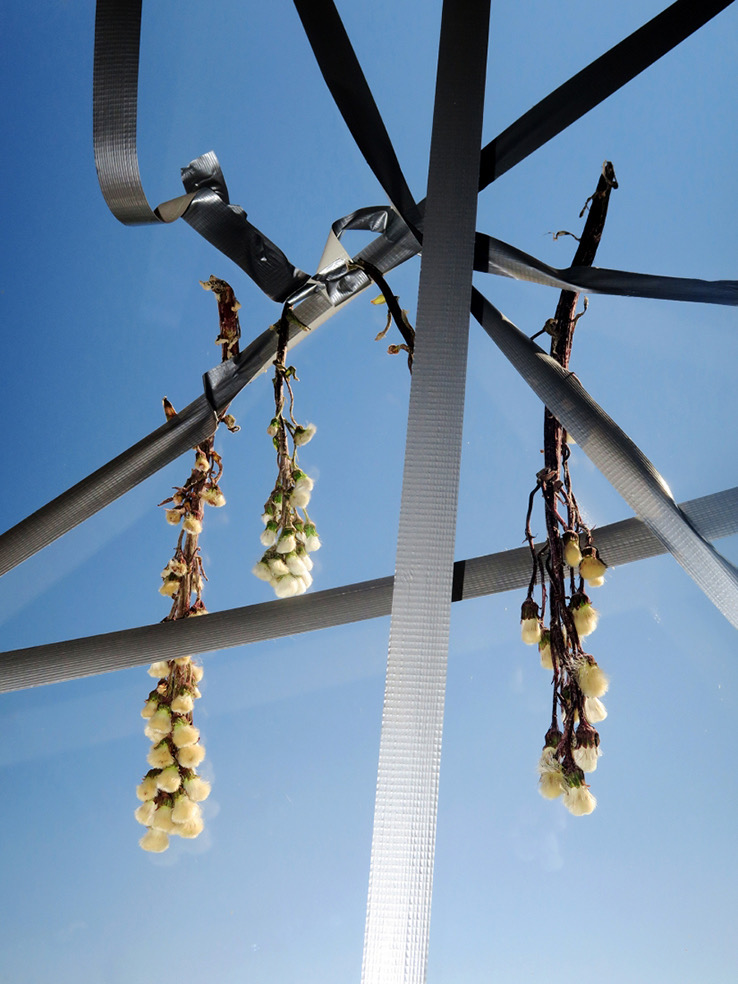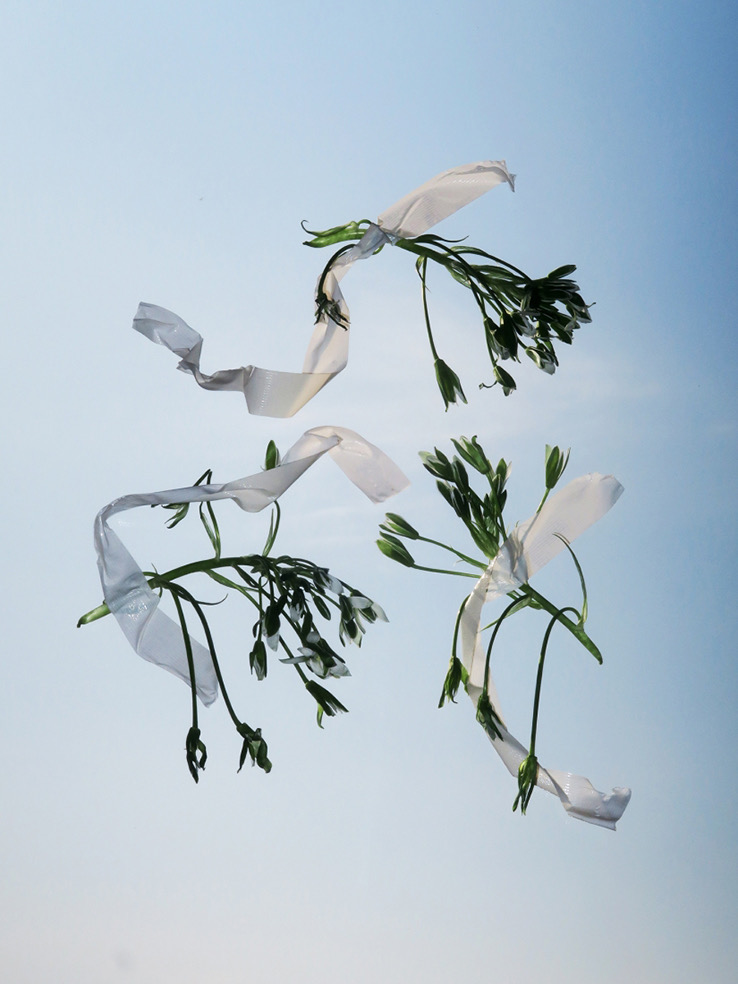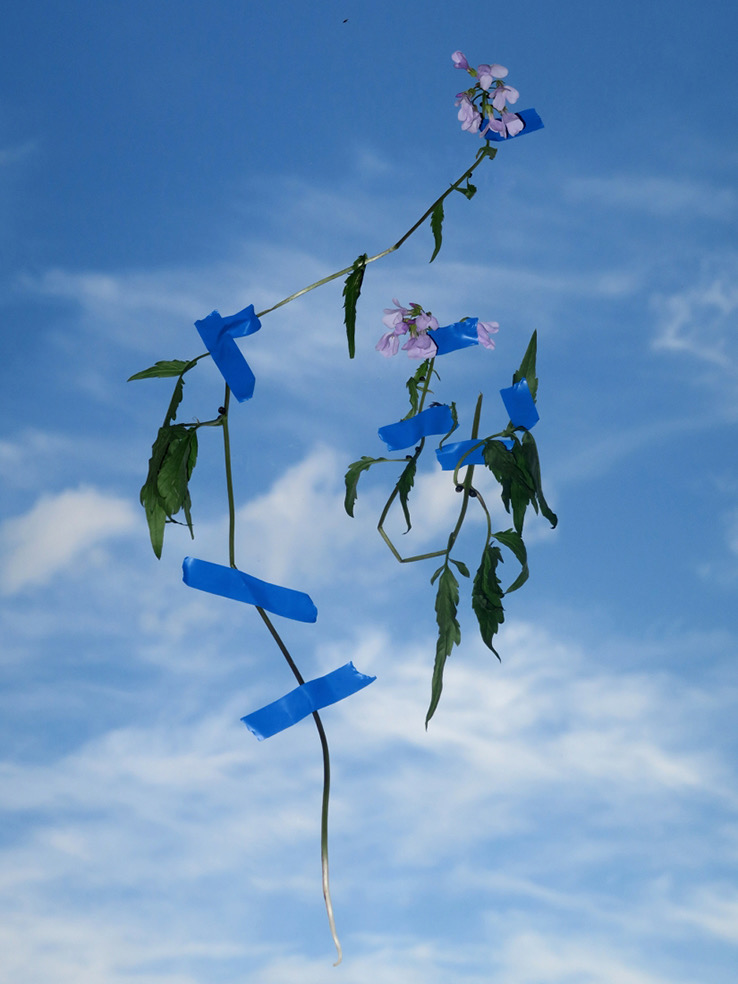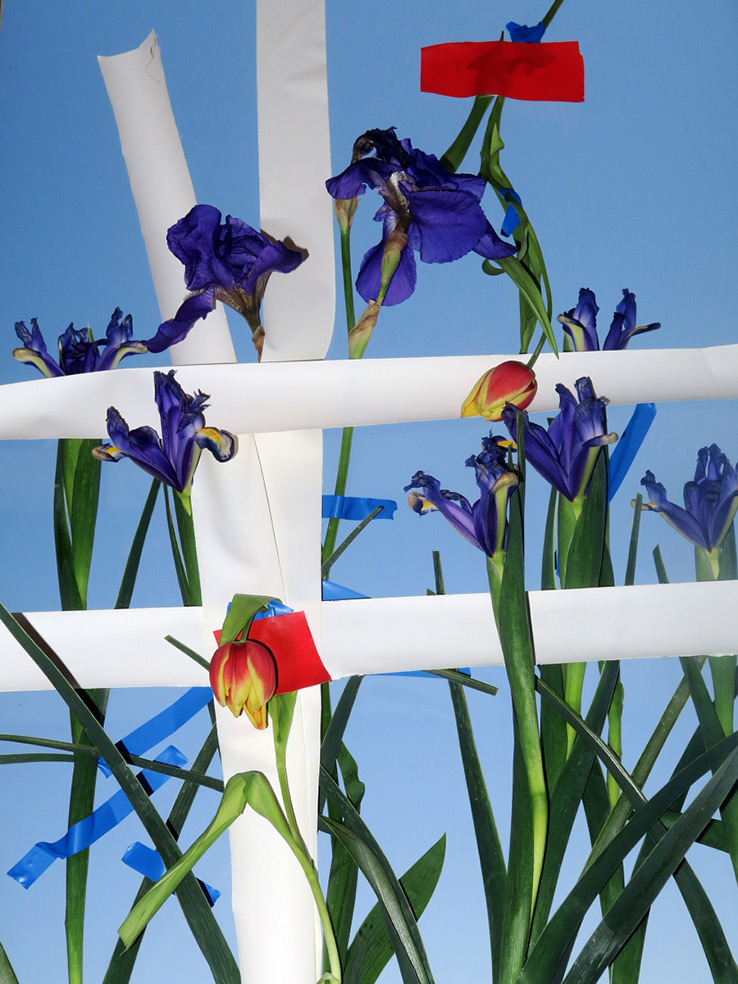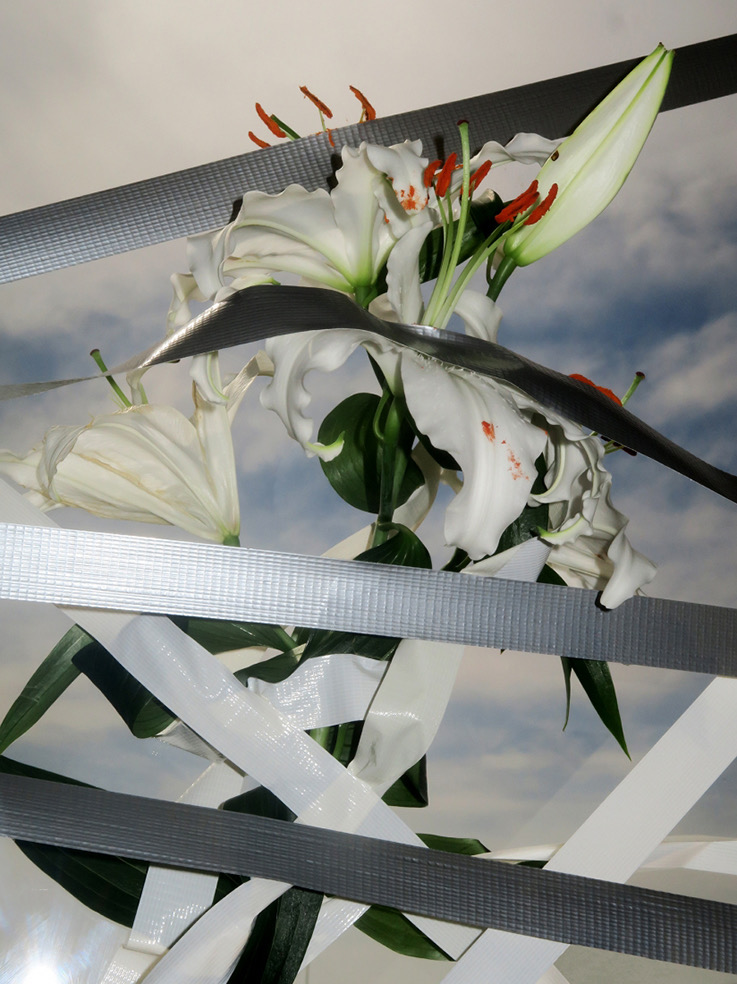This series presents images of ephemeral interventions carried out on glass, oscillating between painting, sculpture and photography. Emprise could be literally translated to grip or under influence.
The work around this series was born from a formal and visual desire. Flowers are attached to a glass window with adhesive tape. This process puts natural and synthetic elements under tension, causing a telescoping between floral composition, botanical herbaria and crime scene. In these hanging gardens, the flowers are smothered and trapped under thick strips of adhesive tape. The images testify to the influence of synthetic materials on the natural world.
Scotch is the synthetic element that constitutes the material and the subject of the images. Always placed in the foreground, it dominates the composition by obstructing or revealing what is shown on the photographs. It prevents flowers from falling and dictates their placement. Its grip on the flowers reveals and makes the shapes disappear under the plastic layers. It also hides what is in the last plane of the image behind the glass. Acting as a screen towards the outside, the glass plate distances the interventions carried out with nature, offering a reflection between inside and outside, intimate and public, revealing only the sky. This last natural element amplifies the incongruous effect of the presence of plastic in images. The cloudy and chromatic changes in the sky vary with each photograph and make the interventions unique.
One of the most present scotches in the series is the gaffer, invented by Ross Lowell, American photographer and lighting director, this banal and indispensable adhesive from the world of entertainment was created to be the least visible during television and film shots. This invisible tool, diverted from its initial use (fixing, hiding and repairing), becomes the very object of the series, the spectacle of interventions. Its presence is accentuated by the reflection of the flash light, which enhances the contrast with the sky. The colour range of the other scotches used as well as the technical and varied properties of this tool make it possible to reinforce the influence of the scotch on the plant: insulation, resistance to high temperatures, visible marking, packaging…
Emprise questions the value we attach to natural goods in the face of the tools created by man and his industry that make it possible to control, constrain and program nature. Will the violence of the embrace of the synthetic on the natural world described in the images make us aware of the ecological challenge ahead?
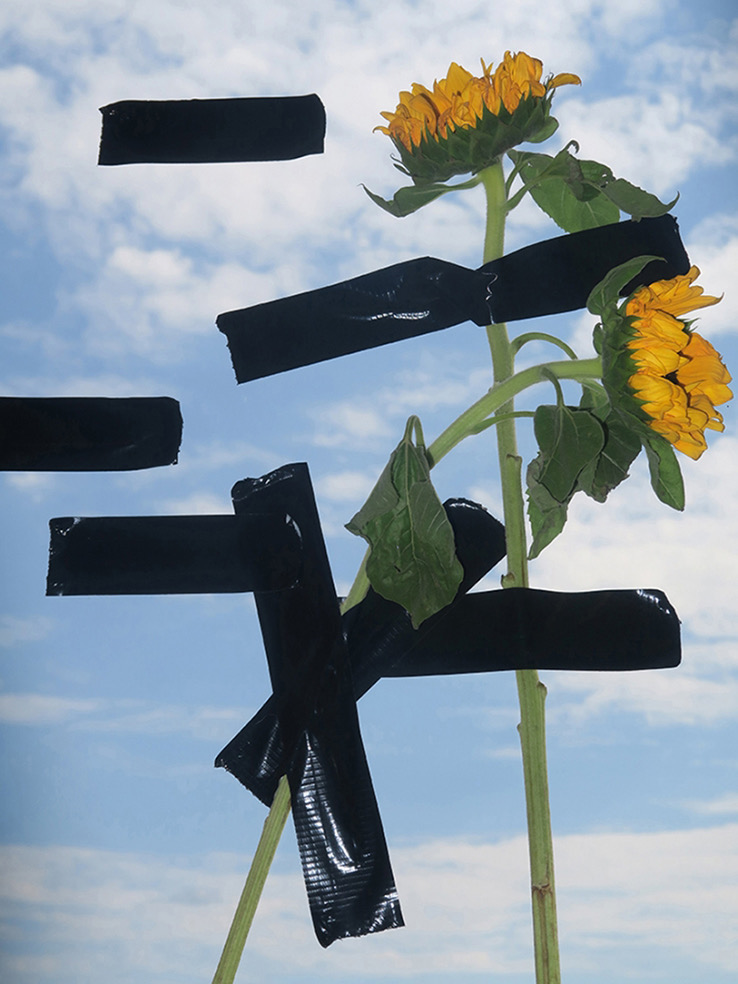
Says Clément: Graduated from a background in general public law and cultural management, I have always been fascinated by the emotions that an image can bring and how an image (drawing, painting, photography) can be constructed. I spent a large part of my childhood drawing, it was only very late that the desire to do photography came to me. My background and training did not seem to have a direct link with the image, but it allowed me to finally integrate LE BAL team as an exhibition assistant in this independent place dedicated to photography and documentary imaging located in Paris. It is in this context that I was able to start my theoretical and photographic apprenticeship by participating in the editing and organization of about ten exhibitions, which was a decisive step in sharpening my eyes on the works, exhibitions and publishing.
For a little over two years, I have been photographing on my side, experimenting and familiarizing myself with the technique and a new practice for me. The photographic subjects I want to develop are related to personal reflections about the saturation of images that we see every day. The question of representation seen through the prism of printed images is of particular interest to me. What do these calibrated images from very large iconography (advertisements, storefronts, frescoes and trompe l’oeil) tell us about and for us?

